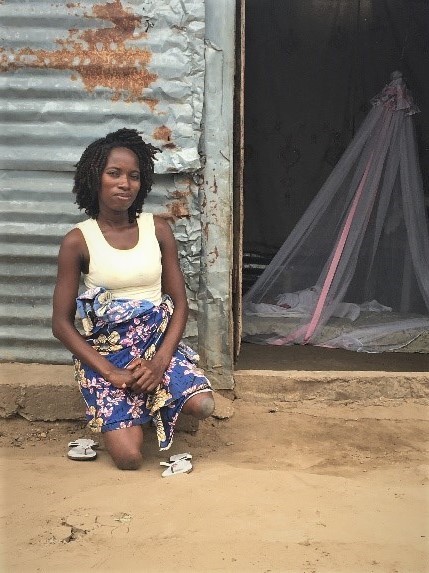Speeches Shim

USAID has been supporting Government of Angola, local governments and civil society to roll out Angola’s first water governance policy.
Being a mother of two, nothing matters more to Alicee Manuel de Oliveira than her children’s health. And nothing can stop her – not even living with her disability from polio – from achieving the best for her children and Angolan community.
Spurred by messages from USAID’s Community Manged Water and Sanitation project, Alice gathered construction materials and human and financial materals to build an imrpoved latrine in her backyard. Alice’s work inspired her community of Bom Jesus in Luanda Province to build their latrines and turned their neighborhood into a model for good hygiene and sanitation practices.
Soon, the neighborhood will be declared defecation free and the Bom Jesus medicial center has already reported a substaintial improvement in the health of the community – all thanks to one mother’s drive to improve her community.
Alice was one of the first in the neighborhood to build her own better latrine in her small backyard and keep it always hygienically preserved.
Through a community managed water and sanitation activity, USAID has been working during the past 5 years with the Government of Angola, local governments and civil society to roll out Angola's first water governance policy. The policy is built upon the framework that the governance over the management of water and sanitation is with communities. The project has helped ensure affordable access to clean drinking water for 82,416 consumers, establish 260 community structures of water management, provided 19,122 children in 31 schools with containers for hand washing facilities, 767 families with improved latrines, and 21,805 households with information on good practices of hygiene and health in the provinces of Cunene, Huambo, Kwanza-Sul and Luanda. As a result of these activities, the project exceeded on its initial target of 36,000 people with access to safe drinking water, and it is estimated that more than 50 percent of the beneficiaries are free of diseases from contaminated water, reducing the burden of hospitalizations and deaths in these provinces.

Comment
Make a general inquiry or suggest an improvement.